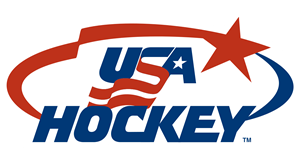Hockey Parent Playbook Blog
Unlocking Potential: The Key Role of Practice in Player Development
When it comes to skill development, especially at the younger age levels, the best way to improve is not by playing more games than an NHLer, but through station-based practices. The number of puck touches and constant activity that take place in a well-run 50-minute practice far outweigh what transpires in a game.
1. Quality Over Quantity: Puck Touches Matter!
According to ADM Regional Manager Ty Hennes, "One properly-run practice is the equivalent of 11 games when it comes to puck touches." Now, that's a game-changer!
2. The Proof is in the Puck Possession:
USA Hockey's puck possession study from the 2002 Olympic Winter Games and Youth National Championships tells a compelling story. Even our young phenoms spent an average of just over a minute with the puck in a game. On the flip side, a well-run practice keeps our kids moving, engaged, and working on their skills for a whole 50 minutes – talk about maximizing their time on the ice!
3. Fun, Fun, Fun – The Winning Formula:
Small-area games demand quick thinking and faster actions, adding excitement to practices. Touching the puck for a minute-plus in a game is not really being involved. You can get 30 minutes of puck-touch time in a station-based practice. That not only helps build their skills, but it’s a lot of fun. Who said learning can't be a blast?
4. Balancing Act: Practice-to-Game Ratio Matters!
Youth teams playing as many games as an NHL team? It happens! But here's the kicker – more games don't equate to better skill development. In fact, playing too many games, especially at a young age, can lead to burnout. USA Hockey recommends a 3:1 practice-to-game ratio. For every 30 games, that means hitting the practice ice over 90 times – a formula for success!
5. It's Not Just Practice; It's the Right Practice:
Parents, we get it. You want to see your little ones in action, scoring goals, and celebrating victories. But here's the thing – the right type of practice is the secret ingredient. Roger Grillo, USA Hockey Regional ADM Manager, emphasizes, "The challenge is creating practices that are not only providing players with quality repetitions but are fun too. Practice for little kids shouldn’t be like eating broccoli but more like eating pizza."
So, yes, let's embrace pizza and practice.
Let's champion the power practice, attendance is important, let's turn every practice into a stepping stone towards player development. Go Crusaders Go!
For more information. The Power Of Practice | USA Hockey Magazine
Previous Blog Entries
Unleash Your Kid's Hockey Game with the USA Hockey American Development Model (ADM)
Hey there, Crusader parents! We all want the best for our little ones, especially when it comes to their hockey adventures. You might've heard about the USA Hockey American Development Model (ADM), but what's the buzz all about, and how can it give your young superstar an edge? Let's break it down in simple terms.
So, What's the Deal with the USA Hockey ADM?
Well, it's more than just a fancy coaching system; it's like a secret recipe for helping players of all ages and skill levels reach their full potential. The ADM isn't just about teaching the technical and tactical stuff; it's a holistic approach that looks at the physical, mental, and emotional sides of the game, all tailored to your kid's stage of development.
Why Do We Need the ADM Anyway?
In today's world, where video games and screen time are trying to steal our kids away from the rink, the ADM is here to save the day. It's designed to keep them active, healthy, and safe while helping them grow as athletes and individuals.
ADM: More Than Just Hockey Drills
You might have heard some folks say, "ADM is only for the little ones." But that's not the whole story! Sure, it starts when they're U8s, but it's a lifelong adventure. It's not just about practicing on smaller ice or doing fun drills; it's about building well-rounded athletes.
Four Pillars of Player Performance
Technical Skills - Nailing those hockey moves.
Tactical Know-How - Learning the ins and outs of the game.
Physical Fitness - Getting in top shape.
Mental Toughness - Staying focused, motivated, and strong upstairs.
These pillars aren't separate; they're like different ingredients in a recipe, and each kid's mix is unique.
Unlocking Potential with LTAD
The ADM uses something called Long-Term Athlete Development (LTAD) to blend training, competition, and recovery with how kids grow, both physically and emotionally. The goal? Turn your little athlete into a full-fledged hockey player who loves the game.
ADM's Guiding Rules: Keeping It Real
The ADM has ten guiding principles that are like road signs on this hockey journey:
- Greatness Takes Time
- Mastering the Basics - while having fun.
- Getting Stronger - staying physically fit.
- Trying It All - importance of multi-sport athletes.
- Growing Their Way - every kid's development is unique.
- Seasonal Game Plan - reset and recovery.
- Mentally Strong - building their mental game.
- Awesome Coaches - coaches who care and know their stuff.
- Teamwork and Harmony - Getting everyone on the same page.
- Never Stop Improving - Always finding ways to make things better.
In a Nutshell
The USA Hockey ADM isn't just for future pros; it's for any kid who wants to enjoy the game, get fit, and pick up some life skills along the way. It's about nurturing a love for hockey, staying healthy, and helping your kid reach their full potential both on and off the ice. So, whether your young star is just starting or has been in the game for a while, consider learning more about how the ADM can unlock their inner hockey hero!
For more information on the ADM: https://www.admkids.com/
Mike Chisholm
Junior Crusaders Hockey
President





